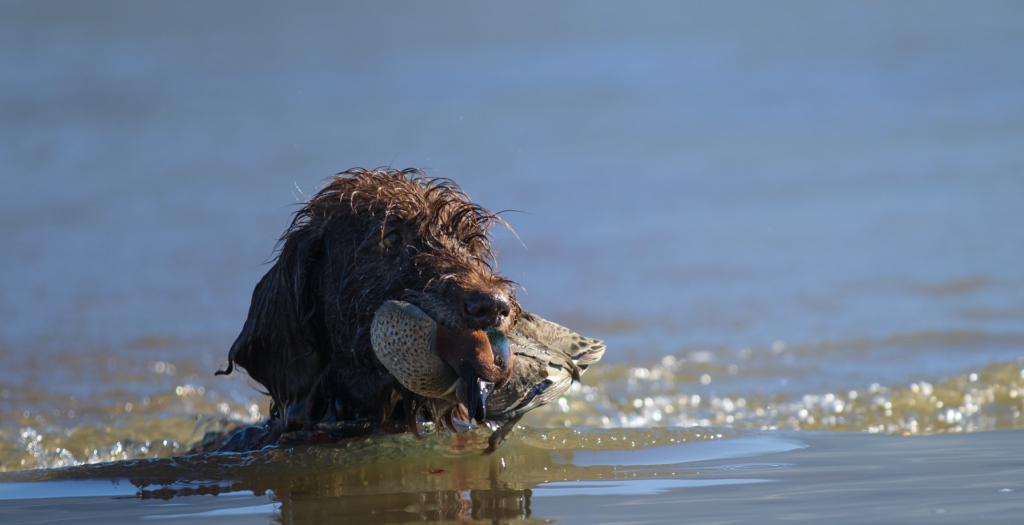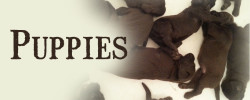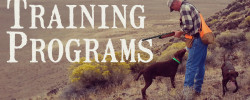Watching a hunting dog effectively track, be it a furry animal on land, an upland bird in heavy cover, or a crippled duck across water, is one of the great rewards of hunting with a good dog. While much of a gun dog’s ability to track comes down to genetics, a great deal can also be taught by us, their owners, masters, and trainers.
In addition to breeding an elite line of pudelpointers, we train multiple breeds of hunting dogs, year-round, from our home in Lakeview, Oregon. Teaching a versatile gun dog to track requires some dedication, but in the end, the dog’s performance will make it worth your time and effort.
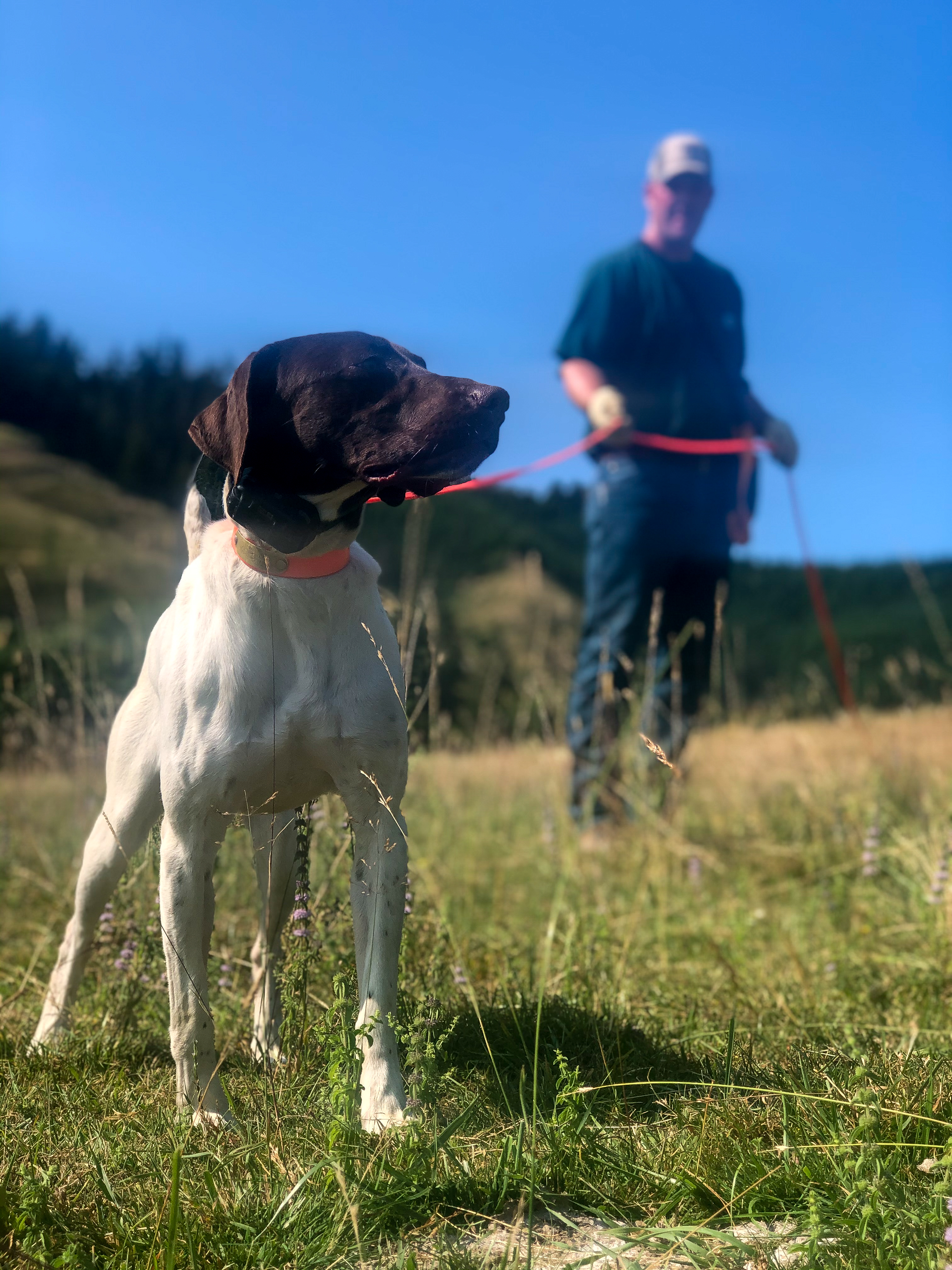
The goal of tracking is conservation, that is, not losing a wounded bird. I’ve started many gun dog pups tracking at two months of age, getting them to use their nose on command.
At first, I place a little piece of hot dog in the yard for the gun dog to find. Right away I give the command “find it” so they know this isn’t a game. Their reward is eating it once they find it, and I always set them up for success. Place the piece of hot dog in spot where they can smell it, even see it once they’ve moved close to it.
As soon as I can, I progresses to using a dead bird to track with the pup. Some pups pick up on a bird smell quickly, others take a bit more time with the hot dog training. Using a bird carcass–one I’ve taken the breast meat, legs and thighs from last season–stored it in the freezer, I’ll pull it out to train with. As with the hot dog, I set up the gun dog puppy for success. With a bird, I’ll pull some feathers and make a small pile where the track will start. Then I’ll drag the bird along the ground so the dog can smell it. I put the pup on a check cord or short leash so I can control their movement as I want them focusing on progressing forward, not getting sidetracked.
If a pup gets distracted I’ll tighten the lead and get them back on track, allowing them to move at their own pace. The thing to avoid is slowing them down by overcorrecting. Keep the puppy moving, but in the right direction.
In addition to dragging the bird carcass on the ground, you can rub the skin around to disperse more scent, or pull more feathers from the carcass. I’ll put a few feathers on the ground every 15-feet or so, to keep the gun dog puppy interested. You can also use white pieces of tissue paper for sight recognition, too. The pup will go to the tissue, then pick up the smell. Soon the puppy will associate the feathers with the smell.
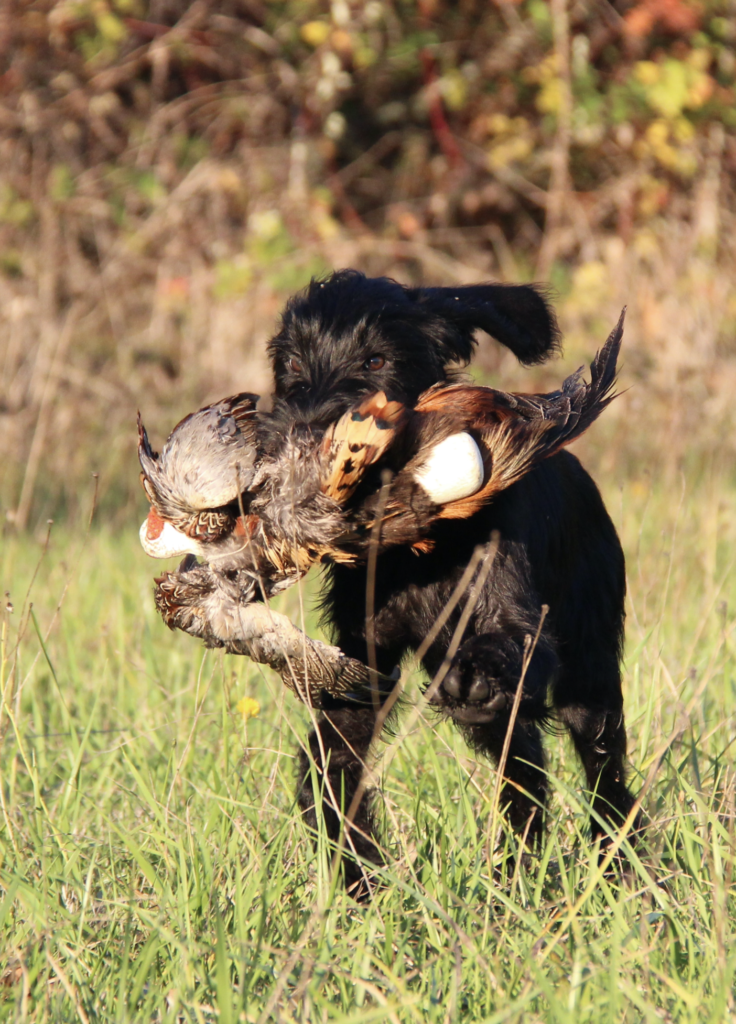
Keep the gun dog pup moving forward toward the bird, which is placed 50-60 feet away. Be sure and place the bird and feathers without the pup watching you, as gun dog pups are smart and will know exactly where to go if they see you placing a bird. If it’s a small pup, start with the bird placed 15-feet away. Keep the tracking training session short and positive, and always ending in success.
Remember, each dog, even as a puppy, is different. You want to place the hot dog, bird, or rabbit skin far enough away so the puppy can’t see it, but still has to cover ground and work to find it.
Having grass on the ground to hold scent is best for tracking training. If tracking training during hot summer months, do it in the morning and evening when there might be a bit of moisture on the ground that will hold more scent. Don’t train on concrete, gravel or dirt. Mornings are ideal for tracking training as the humidity is higher and tracking conditions, better for you gun dog puppy. Don’t track train on hot days or in high winds, either. Cool mornings following a rain or gentle mist are great for tracking training, as are foggy days with dew on the ground.
Once the puppy has straight-line tracking down, it’s time to train the pup on turns. To train a puppy how to track on turns, drag the bird carcass in gentle turns so pup can follow it, but make sure it has to work a little for it. As the pup achieves success, make more turns and increase the angle of severity of those turns. If the pup gets off track, use the check cord to get them back on it. It might sound difficult, but the noses and intelligence level of a versatile gun dog with a quality bloodline, is impressive.
Some gun dog puppies like to track on the run or at a gentle lope, while pups track with their nose up, and still other pups with their nose down. With dogs that track with their head up, it looks like they’re not doing the right thing, but they’re actually catching the wind as it rises from the ground, so let ‘em work. As the puppy progresses, increase the distance and turns and introduce obstacles like logs and creeks. This is the time to start simulating what you’ll encounter in the field, during actual hunts. Teaching your gun dog in actual hunting scenarios is the best training they can achieve.
If you’re a waterfowl hunter, first master the tracking on land, then move to shallow water. Wading and dragging a duck carcass across the water is a great way to teach puppy how to track on water, and yes, dogs can smell the scent left on the water’s surface cripple birds.
Once a pup has tracking down, they’ll not forget how to track. Still, it is a learned skill, so come back to it and keep working on tracking with your dog throughout its life.
With a pup I’ll track at least once a day, often in the morning and evening, and I won’t overload them with other training. I’ll keep these puppy tracking training sessions short, fun and successful. With adult dogs I might track train once every couple of weeks, depending on how the sessions go. Each dog can be different, so be sure to recognize what they need work on.
When it comes to tracking training, proceed at your dog’s level of achievement and strive for good practice sessions with consistent word repetition. I don’t use electric collars when tracking because I don’t know what the scent is doing as the dog moves away from me and I don’t want to falsely correct them. Keep tracking training fun and brief, and soon you’re versatile gun dog puppy will be impressing you with its skills.
